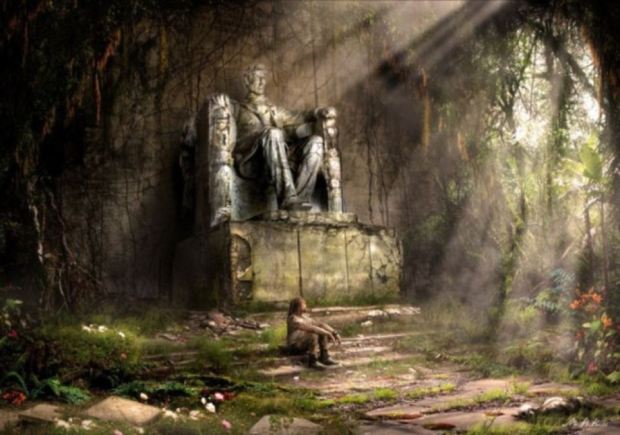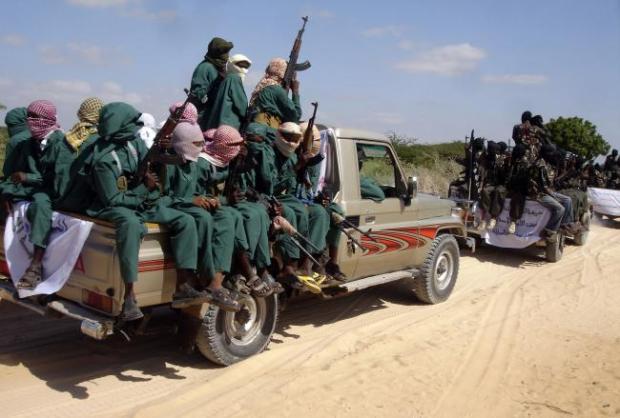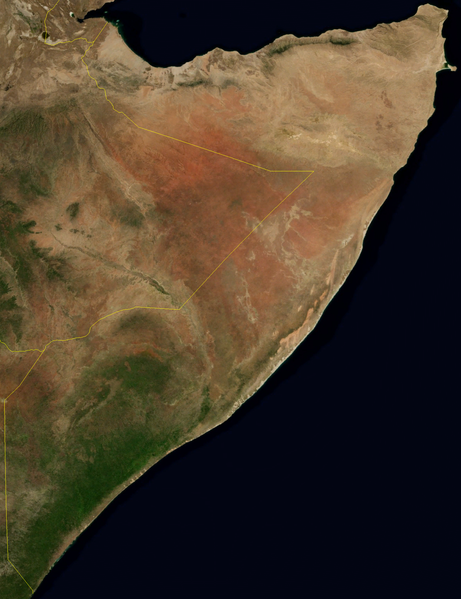In just the past six months, we’ve seen a veritable pantheon of countries falling into the shitter. From South Sudan in January to Ukraine this spring and now Iraq this month, it’s been a rough year to be a government. And that’s not even counting the nightmares still unfolding just out of the public eye: Syria bleeds, Somalia burns, Afghanistan withers, and Nigeria just barely gets by.
Many of the readers of this site come from safe, prosperous nations. When you get up in the morning, you can reasonably assume you’ll get to work and/or school without major issue. Politics is a pastime, not a lethal animal that could pull you from your car at a red light and shoot you in the head in public because you’ve got the wrong ethnic name.
How, then, do some places fall apart? Why, beyond the specifics of Shi’a vs. Sunni, is Iraq a mess, while nearby Kuwait, also “enjoying” a Shi’a/Sunni split, isn’t?
Baby cakes, have you come to the right place.
First: a failed state is a place where a government doesn’t do much anymore
The Fund for Peace has a fun little map called the Failed States Index. The index takes into account a whole load of variables and rates each country on Earth; the redder it appears, the more likely it is to collapse. (Fun fact: America is yellow!)
People who live in democracies take for granted how much their system works on a day to day basis. Call the police and they’ll show up. Start a fire and some complete stranger will arrive to put it out. Flip a switch and a dark room will magically illuminate. And while you may hate your leader ever so much, you know that eventually they will leave (and most governments have a predictable timeline of when that’ll happen). From sorting your driver’s license to filing a lawsuit to buying a meal at a restaurant from a safe food source, your government more or less does its job pretty well. That can seem untrue when the Department of Motor Vehicles forces you to wait fifteen minutes instead of their promised five, or when you hear about a small set of asshole voters single handedly blocking national immigration reform, but compared to a failed state, this is paradise.
If you were to equate a failed state to a television show, this would be the list:
- Sustainable country: Finland, or Modern Family (where problems are comically exaggerated, and nobody gets killed)
- Stable country: United States, or Breaking Bad (where serious problems exist, but are contained to specific areas and specific people)
- Warning country: Colombia, or Game of Thrones (where chaos is regular, loads of people get murdered, but there’s still a fucked up kind of logic about it)
- Alert country: Congo, or Walking Dead (where there are no rules, there is no end game, and getting from one episode to the next is a major achievement)

Safety is in Scandinavia. Meanwhile, stay the hell out of Central Africa.
So how does one fail a state? The same way you ruin a house party
Think back to a house party that went from awesome to totally shitty. What was that process? It was not, as you may think, the result of people getting tired or too drunk: had people been troopers, they could have carried on. Rather, a hinge point arrived when the decision to leave was easier than the decision to stay. This hinge point was dictated by just a handful of people. To ruin a house party, you don’t need a majority. You merely need a few key players to walk out of the door and for everyone to see it. The next time your ex throws a party and you want to ruin it, merely show up and wait for a moment where a handful of important people start to get bored. Then suggest something better and open the door for them. The odds will be good they’ll take the offer, the house party will collapse, and you’ll have the revenge you seek.
A state is a more complicated system that has the same kind of hinge points. Unlike a house party, it’s hard to leave a state. This makes the point where leaving a state’s warm embrace more difficult to prove. But in virtually all states that fail, the following hinge points appear.
Hinge point #1: The state can’t, or won’t, help you out when you need a hand
You lose your job; you get your unemployment check; you walk by the secessionists’ meeting rather than going in. When a government can ensure you don’t worry about tomorrow, your faith in it will remain. You can hate the president but love the Medicare his government provides. But should that check not appear when you expect it, you’ll suddenly wonder why you bother paying taxes, serving in the military, or cooperating with the police. The bonus of free coffee will only sweeten the secessionists’ meeting.
Often, such a hinge point happens during an economic crisis, a military emergency, or some overwhelming event that breaks the simple machinery of the state that cuts checks. The state needn’t be necessarily corrupt for this to happen, and in a democracy this would simply result in one political party taking power from another. In rigid dictatorships or one-party states, such a transition wouldn’t happen, but the overall system would keep humming along. In both cases, the state itself would not be threatened – yet.
Hinge point #2: The state can’t, or won’t, enforce its own rules
No stealing! says the Leader, who then goes on to be caught openly stealing. Nobody loves a hypocrite. If your state is still working, said Leader is removed from power. If it isn’t, not only does he not leave, but he learns to steal even more. Of course, what’s okay for him isn’t okay for you. The next time he comes to town, you’re as likely to toss a grenade at him as a flower.
This is the beast of corruption. Corruption comes from many places, including tribalism, nepotism, racism, and just run-of-the-mill criminality. A state that can’t or won’t face corruption down degrades its ability to function. This isn’t a death sentence just yet for a state. But its well on the road.

Pretty much the problem right there.
Hinge point #3: The state no longer can protect you from big stuff
Earthquakes happen. So too do invasions, terrorist attacks, and other really lethal but still unlikely to kill you events. The average American has always been more likely to die in a car wreck than a terror attack or natural disaster; nevertheless, the knowledge that the U.S. government can respond to such a disaster helps keep the place on balance. If a “you’re on your own” mentality took hold, the power of the state to carry out much of its duties would be diminished as people scrambled to sort themselves first and worried about total strangers later.
This is a major moment for any state. It could come from invasion from a superior force (like Iraq), or from corruption going so wild as to cannibalize the government entirely (like Somalia or the Democratic Republic of Congo), or even from a pandemic that wipes out so many people that the economy can’t function properly (which hasn’t yet happened, but shouldn’t be out of the cards).
After this is when you stockpile ammunition, water, and canned food.
Hinge point #4: The state can’t protect you at all
When you call the cops and they never arrive is about when you stop believing you have much of a government. When neighbors can form militias to rampage as they like, when foreign forces of all stripes can cross the border and smash, grab, and kill, when your morning routine involves counting how many bullets you have left after last night’s fighting, you can say with firm finality that your state no longer exists.
Somehow or another events elsewhere have overwhelmed government forces. Zombie movies can do a great and terrifying job at showing such a thing happening at great speed: in Dawn of the Dead, the American government just can’t deploy enough force to combat the undead hordes in enough places. As it becomes clear the fight is a lost cause, the government dissolves, and you’re the last one to find out.
From this point on, it’s you against the world
And you cling to family, culture, language, and religion as clear identifiers of who is good and who is bad. Uniforms mean less than racial characteristics; they could be just as easily the scraps taken off your dead government as remnants of it. A new society is formed, one more familiar to the tribes of the Stone Age, where violence is calculated in zero sums, and where survival from one day to the next is not guaranteed.
A failed state is an ugly place; roads cannot be built, schools cannot run, and the only thing that can save such a place is the imposition of overwhelming violence and force that can break the factions that invariably coalesce within a country that has failed.
In the modern world, no failed state has yet recovered from its status. They are lost worlds; the 21st century passes them by. Nobody fully knows how to recover a state from a ruined one just yet; Somalia is a case study, but hardly finished.
Avoiding such a status means avoiding the four hinge points. So long as cops answer phone calls, politicians carry out most of their duties most of the time, and no great crisis overwhelms the country, most states can take big hits and keep on functioning. But a series of hits – and some seriously bad leadership – can undo many places. Watch the map; hope your country stays yellow or green. If not, grab your rifle and find a dog you can trust. The looting won’t be far off.




